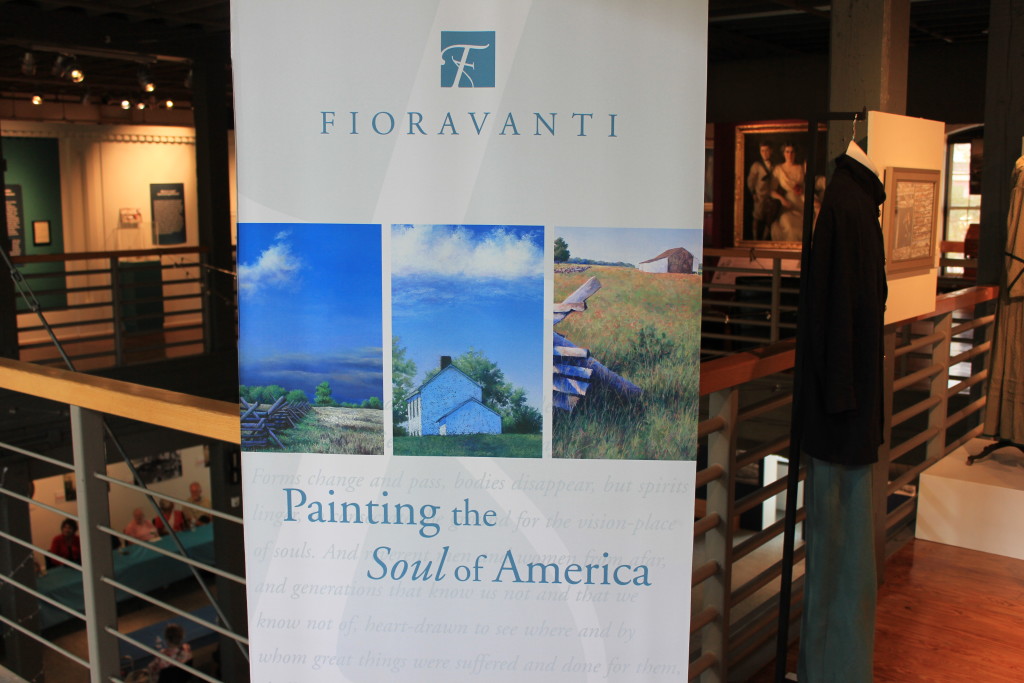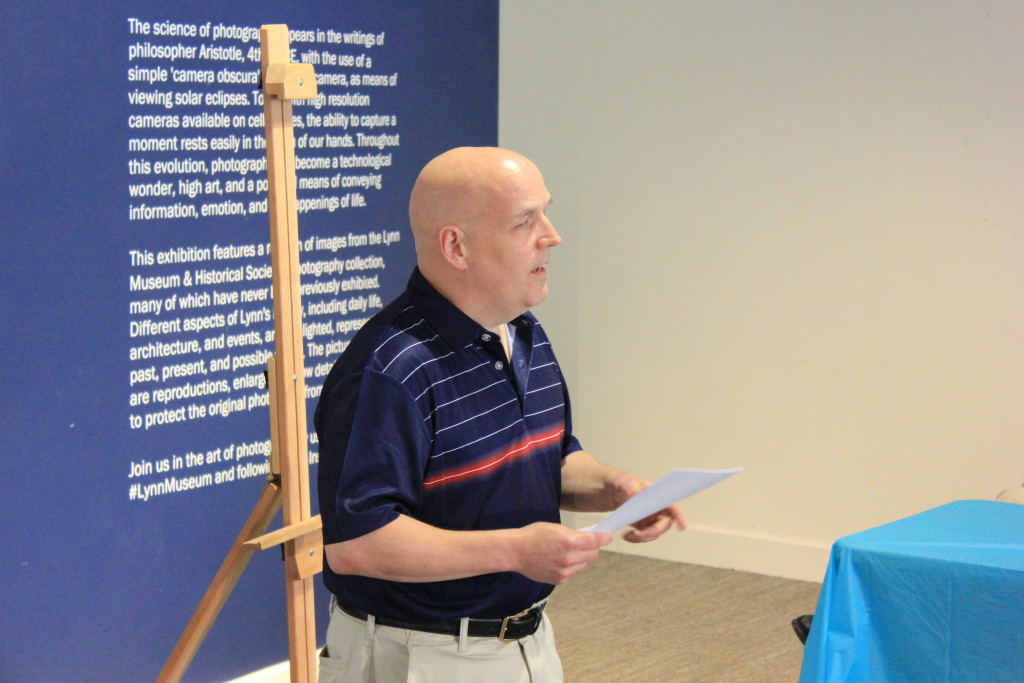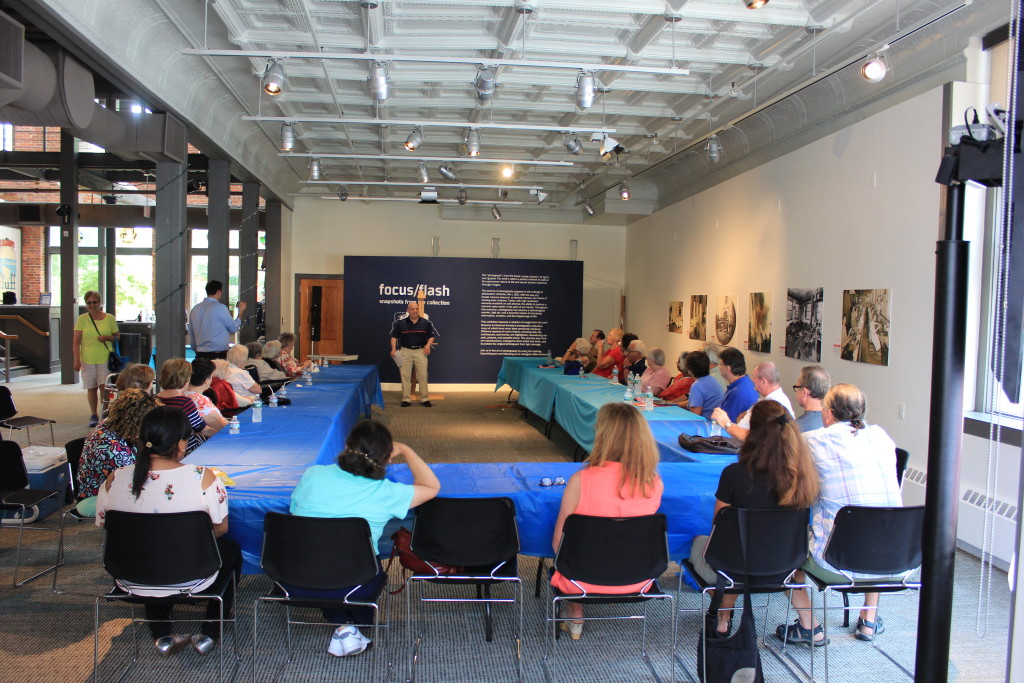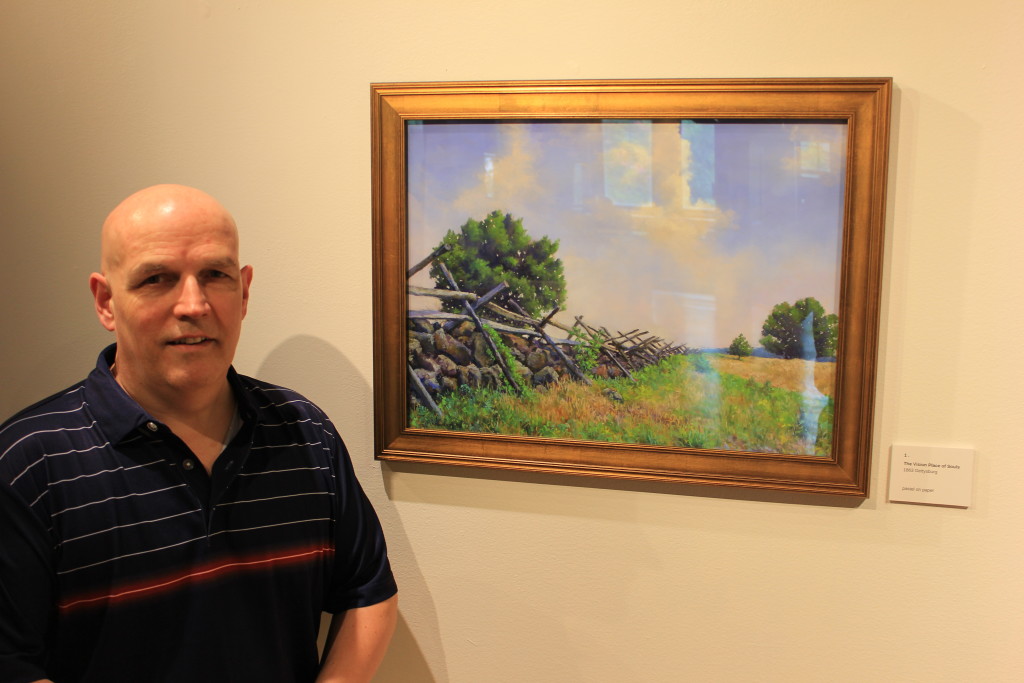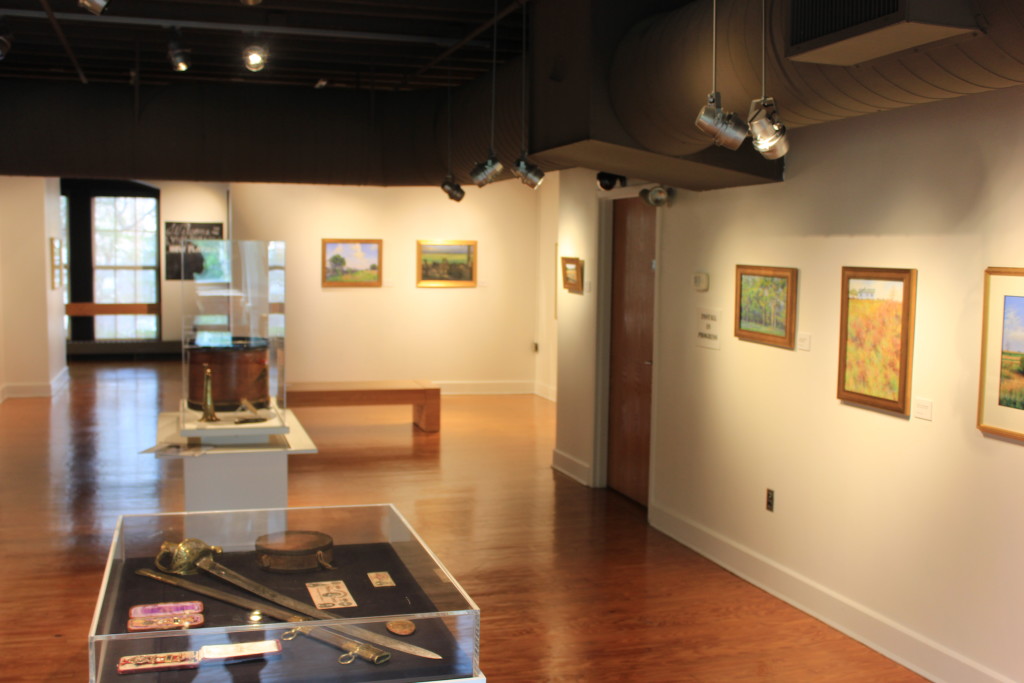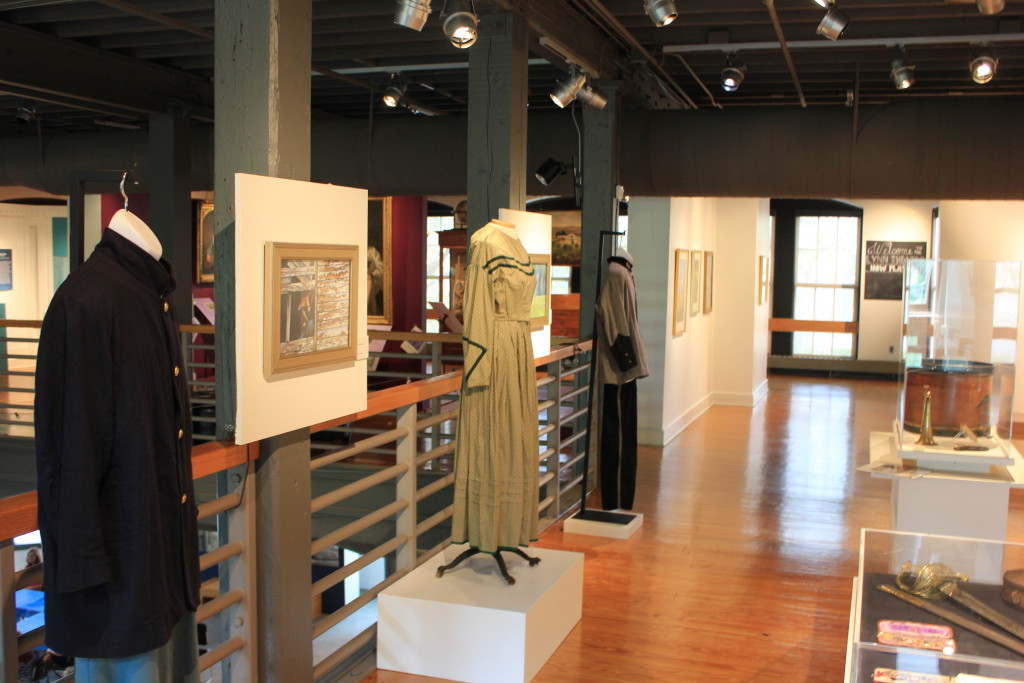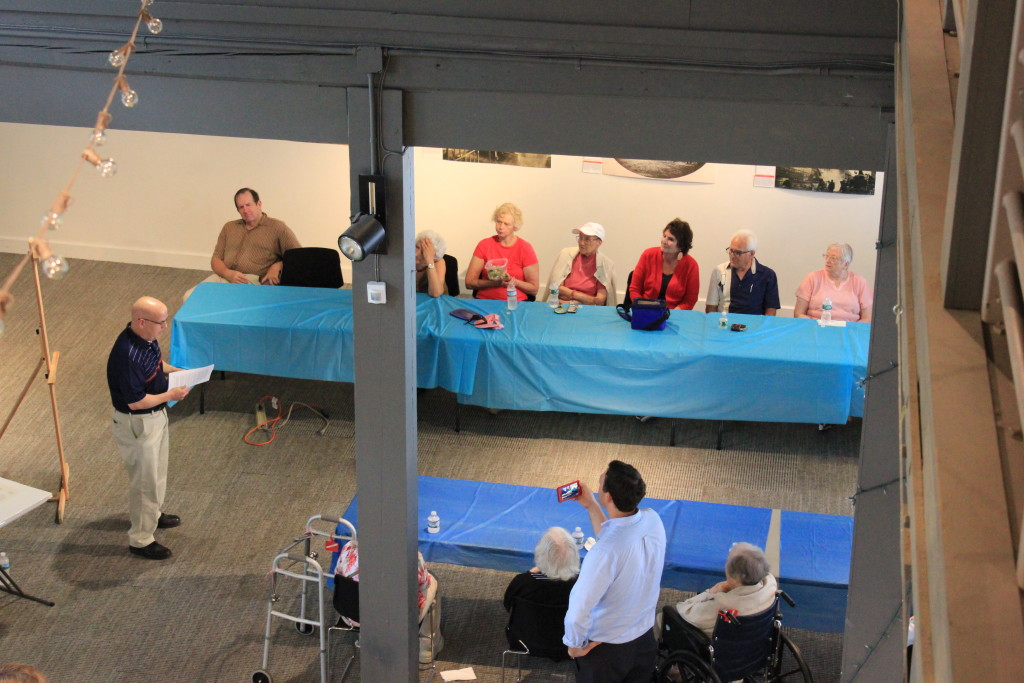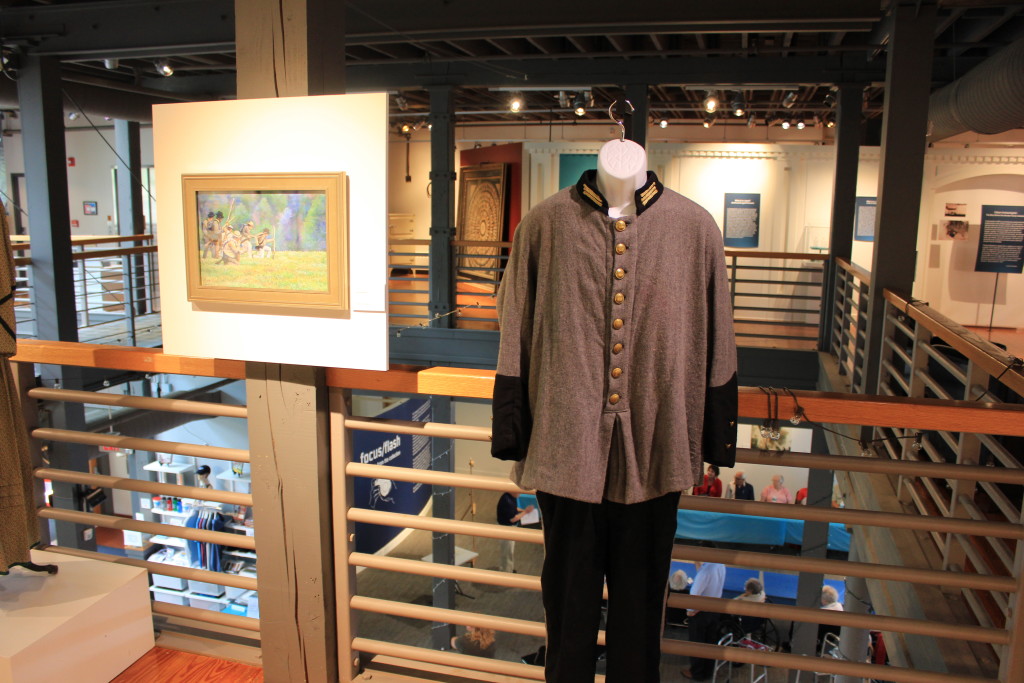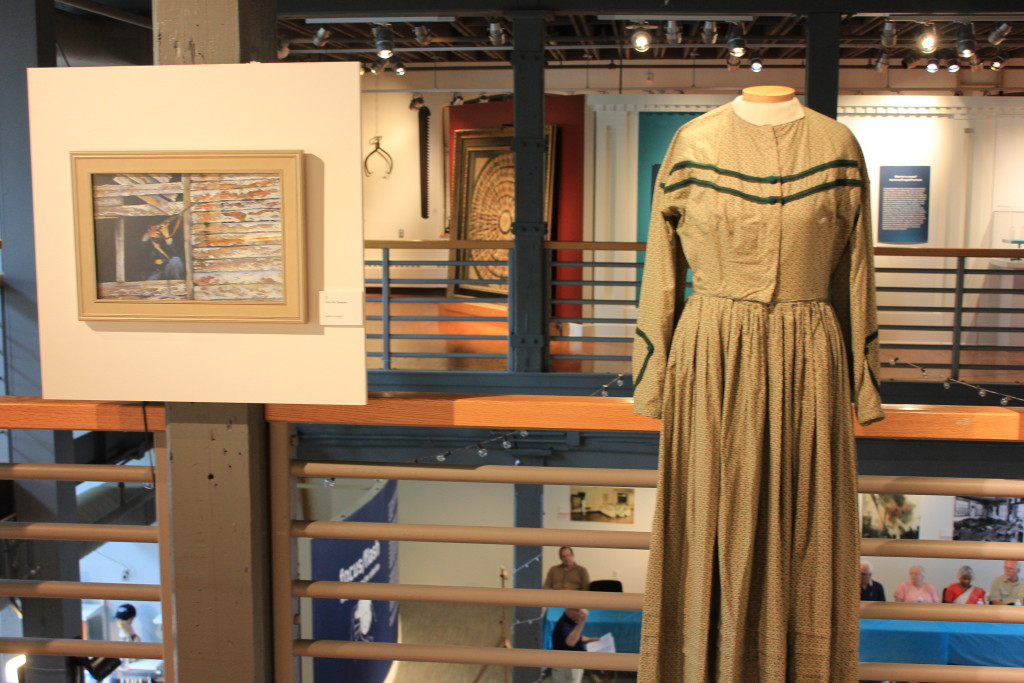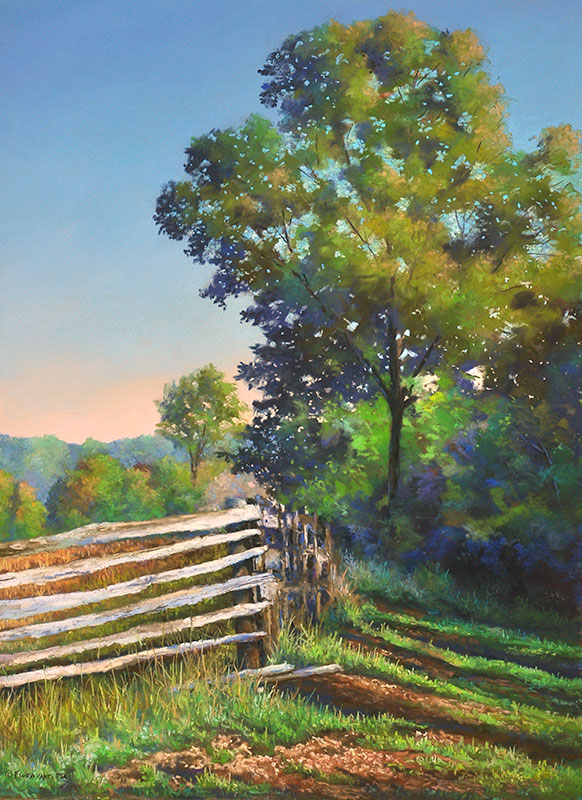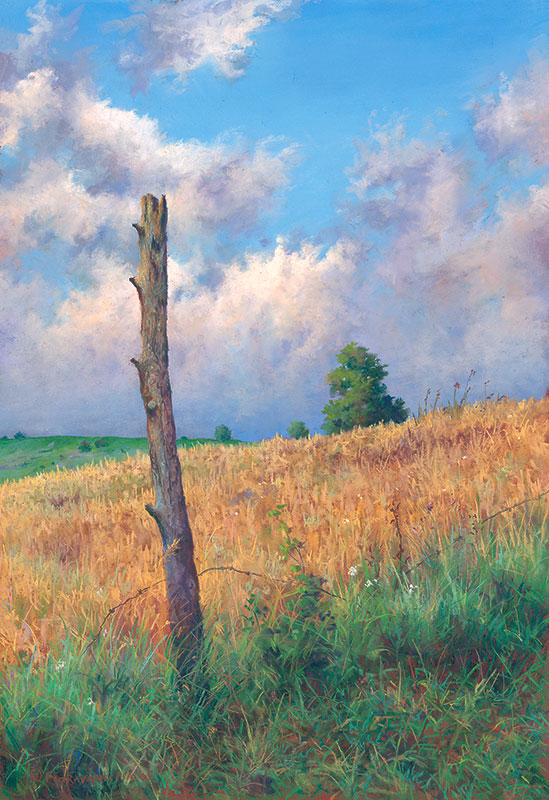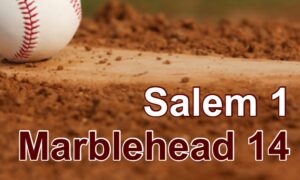LYNN – (Video & Photos) Artist Jeff Fioravanti spoke at the Lynn Museum Wednesday regarding “The Vision Place of Souls”, which focuses on Fioravantia’s interpretations of the Eastern Theater of the American Civil War. Fioravanti, a Lynn resident, is a nationally accomplished pastel artist and oil painter. He has long possessed a love of the American Civil War inspired by the artists of that conflict including Winslow Homer, Conrad Wise Chapman, Richard Norris Brooke, Alfred Waud as well as the prints produced by Currier and Ives. Additional Information is below including a video interview and photos from yesterday’s event. Also below are two of the paintings on display along with Fioravanti’s written explanations. These texts are available at the museum for visitors to read on his paintings.
Jeff Fioravanti’s Web Site Click Here
Gallery From Wednesday 7/12 Event at Lynn Museum
Below are two of the works on display at Lynn Museum Through 12/22 with written explanations
Salutation and Farwell – Text below from artist Jeff Fioravanti
In many ways, April 12, 1865 mirrored much of what the war had been as a rain fell down upon the combatants in blue and gray. Three days earlier, on April 9th, the last gasp efforts of the Army of Northern Virginia (ANV) had all but convinced their commander, Robert E. Lee, that there was nothing left to do but go and meet General Grant. Lee would remark, “There is nothing left for me to do but go and see General Grant and I would rather die a thousand deaths.” But Lee knew that his men were spent, their cause was spent and like Grant, time now was to start the process to heal the fractured nation. Along this ridge and in this position, Union soldiers would stand in the rain and the mud, observing across the valley the assembling of their counterparts. They would see them break camp, meander down the opposing ridge and approach in a mood reflective of their gray uniforms, downcast, depressed and disconsolate. As the Confederate Grays approached, led by General Gordon, who upon his horse merely rode in sort of pall with his head bowed down, his chin bobbing and almost touching his chest.
Suddenly, Joshua Lawrence Chamberlain, commander of the Union troops and designated by General Grant to receive the surrender of the defeated ANV. Chamberlain had given an order to bring the Union troops to a position of respect for their fallen foes and once again countrymen. Gordon immediately ordered his troops to return the salute, a case of “honor answering honor” as noted by General Chamberlain.
Other armies of the south would still be in the field beyond April 1865, with the last standing army not surrendering until June 23, 1865. However, for all intents and purposes, the capitulation of the Army of Northern Virginia and General Lee effectively is the point upon which the war was ended. More than 600,000 souls had been lost and it would be century and in many ways still occurs today, that the roots of this conflict that made us a nation are still being fought in other arenas today. Perhaps in our children’s time the complete and final healing will be realized and a peace will finally bathe the land.
The Terrible Things I Have to Chronicle – Text below from artist Jeff Fioravanti
Antietam or Sharpsburg, as southern armies knew it was the bloodiest single day of the American Civil War. Why the two names? Many battles during the war were known by more than one name. Northern troops tended to name battles by the nearest geographical feature, such as river, mountain, wood, etc., while southern troops tended to name the battles by the nearest town or settlement. Antietam Creek flowed near the town of Sharpsburg, hence the two names for this battle. There are exceptions of course, with Gettysburg being the most notable as both armies referred to that battle by that name.
The Battle of Antietam would be fought in three phases. The morning phase would open in Miller’s cornfield at approximately 6:00 AM. The mid morning phase would shift to the center of the Confederate line around a sunken road and the early afternoon phase would swirl around Rohrbach Bridge, now known as Burnside’s bridge.
Historians have often debated where the true High Water Mark of the Confederacy existed. While Gettysburg is often called by that moniker, the fact that Antietam, though technically a draw from a military standpoint, would produced so many profound consequences, making a strong case that this battle is the true “High Water” mark. Among the consequences, Maryland would remain firmly in the Union thus denying resources from that state for the south and helping to prevent Washington, D.C. from becoming isolated. European countries who had debated and considered intervention and perhaps support of the southern attempt at independence silently backed away and remained forever as interested observers, again denying valuable resources to the south. It helped to keep Republicans in office making things easier for President Lincoln when dealing with Congress. The first images of the horrors of war were produced and displayed by Mathew Brady in his studio. The NY Times would write of Mr. Brady’s exhibit:
“Mr. BRADY has done something to bring home to us the terrible reality and earnestness of war. If he has not brought bodies and laid them in our dooryards and along the streets, he has done something very like it.”
But the most pivotal event to come from this battle was Lincoln’s issuing the Emancipation Proclamation, which officially changed the war to a war for Union to a war for freedom and made certain that the states in rebellion would find no help from any country in the world given their stance on slavery.
It was, despite all, a horrific day in a horrific year, in a horrific war. A soldier from Georgia would write home to his wife the day after the battle: “God, what awful things I have to chronicle this morning!” One of the most awful battles that was ever fought yesterday. It commenced at daylight and continued all day until dark.This war will have to stop before long, as all the men will be killed off.”
Fioravanti has often parlayed his love of art and American history to help a number of organizations preserve the lands and artifacts of this traumatic period of our nation. His Civil War works have received great acclaim. The late author and Civil War historian Brian Pohanka once said that “Jeff Fioravanti’s paintings evoke an almost tangible sense of place; not in the hills and streams, the fields and forests alone, but in the still greater sense of the heroism and sacrifice that transpired there.”
The landscape itself is a timeless memorial to those heroes in blue and gray; and Fioravanti has created a lasting tribute to that Hallowed Ground. The exhibit curator is noted local artist and arts advocate Jocelyn Almy-Testa, who also serves as Executive Director of Extras for Creative Reuse in Peabody, MA. “The Vision Place of Souls” will be on display from now through Friday, December 22nd.




